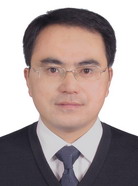With the great volume of Sloan Digital Sky Survey (SDSS) data being released (from DR1 to DR17 now), it becomes possible for us to study how galaxies and large scale structure of the universe were formed, what the amount, composition and distribution of matter in clusters and large scale structures are, how the cluster mass density related to the matter density does in the universe and what constraints the cluster and supercluster data place on cosmology. Clusters of galaxies provide a powerful tool for the study of galaxy formation, dark matter, large-scale structure and cosmology. We often use SDSS, NED, BATC, COSMOS Database, and so on in our science research which methods are provided here. Read them carefully and you will find they are convenient for you. (download software Putty,X-Win32, WinSCP, UltraEdit, FITS Viewer (fv) SAOImage DS9 (ds9) or ESO scisoft8 for Fedora 20.)
1、 Data Download
ADS/BAO mirror --> Search
Max Planck institute for Astrophysics (SDSS)
Beijing-Arizona-Taiwan-Connecticut (BATC)
Beijing-Arizona Sky Survey (BASS)
The South Galactic Cap U-band Sky Survey (SCUSS)
All-wavelength Extended Groth
strip International Survey (AEGIS)
Chandra X-ray Center
IRSA(Spitzer, WISE, 2MASS, ……)
Level 5
HyperZ Photometric redshift code
Light Curve ---
ASAS-SN、ZTF、CSS
FITS Viewer (fv)
---
fv User's Guide v5.3
SAOImage DS9 (ds9)
--- SAOImage DS9 Users Manual
2、Some Astronomers'
Homepages
4、NASA/IPAC
EXTRAGALACTIC
DATABASE
(NED)

Bian Wei-hao

Fan Xiao-hui

Ignacio
Trujillo

Kong
Xu

Ma Jun

Raymond E. White

Shen Shi-yin

Wu
Xue-bing

Yang Jian-ming

Yang Yan-bin

Yuan Feng

Yuan Qi-rong

Zhang Tian-meng

Zhou Xu

Zou Hu
5、COSMOS
 科学研究
Science Research
科学研究
Science Research



 Build
Data Table from Input List
Build
Data Table from Input List